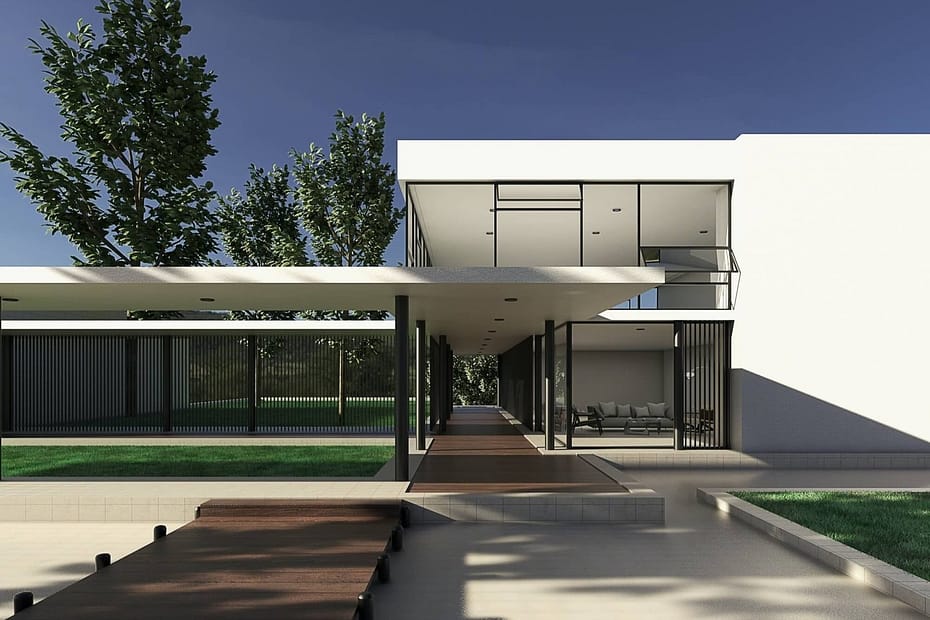With the ever-growing advances in architecture technology, 3D Modeling and 3D Rendering have remained two of the most important tools in the industry. While these terms may be used interchangeably, understanding each of their distinct qualities and purposes is essential for both architects and clients. In this article, we want to help you better understand the difference between the two.
Why are these concepts confused?
If you don’t have much experience working with design, you may hear the terms “3D Modeling” and “3D Rendering” used together. It can be easy to become confused by the similar terminology, but those who have expertise in this field generally don’t bother to explain these concepts. During a presentation of 3D work, the results of both 3D Modeling and 3D Rendering are combined to give the client a full picture; however, it can be difficult to distinguish between the two.
So, let’s start with 3D Modeling
3D Modeling is the process of creating 3D objects through specific software and creating a digital twin of any object in 3D space. This is the beginning step of interior or exterior design. Many people think that design purely involves creativity, however 3D Modeling relies greatly on mathematics. It involves connecting points referred to as ‘vertices’ and ‘edges’ to create a 3D image or model which usually starts with basic geometrical shapes such as planes, spheres, and polygons.
In architectural design, the placement of objects or their composition, perspective, and the logic of the space all matter. 3D Modeling enables you to represent this accurately in a virtual reality. This model can then be used by Architects to create layouts, builders to understand the scope of the project and purchase necessary materials, and designers to create 3D Rendering. This blueprint of the project lets you plan it and reduce any risks when translating the design to reality. It helps visualize the project from the inside and identify possible problems or obstacles before construction.
The next step is 3D Rendering
Once everyone understands the project, they are eager to see how the concept will turn out in the end. This is when 3D Rendering steps in! Rendering is not possible without 3D Modeling, which is the development of a detailed prototype. This rendering process involves converting a 3D model into a photographic 2D image. For example, the illustrations seen in the “Get Inspired” tab on CADdetails are all 2D images. These images illustrate objects in their space, shadows, textures and angles, and are able to accurately reflect the desired atmosphere of the design. At Renderch, our 3D rendering services team takes the visualization process to the next level, adding life-like touches to every design to best capture the breadth of your ideas. 3D Modeling is a mathematically focused process, and 3D Rendering provides space for emotions and feelings.
What does a 3D Rendering process consist of?
The creative process for rendering begins with envisioning the idea and design. During this stage, the designer collaborates with the client to comprehend their preferences and expectations. Both parties can then discuss reference points or implement mood boards to develop the project. Decisions about accessories, technology, and camera angle also come into play at this step. Once everything is finalized, it’s time to transition to 3D Modeling. This process uses mathematical precision to establish a potential design regimen. Thereafter, Light, Camera, Render! can start.
The main element separating Rendering from 3D Modeling is the inclusion of light and shadows, as well as the objects’ volumes and how they interact with the design code. Being able to adjust camera angles here will help create a more desirable atmosphere. Once the basic styling of the composition is complete, decorative and natural elements are introduced, giving the design added positive aesthetics. Eventually, the integration of all components will be put together, leading to the rendering phase. Depending on the complexity, this procedure can take a few hours or days to finish.
3D Rendering: more practical value
Rendering brings digital marketing to the next level. Today, real estate promotion depends on rendering for landscape design, remodeling, and even 3D tours for tourism. The expansive AR and VR industries are also positively impacted. More than a stunning visual to entice buyers, rendering provides the infrastructure for a comfortable living space. With 3D rendering, design solutions can be thoroughly vetted to verify that the final product meets all expectations. Through accurate detailing that includes potential cosmetic changes, homeowners are able to achieve beautiful visualization of an effectively planned environment. By incorporating design features such as power supply points on the 3D rendered model, homeowners protect themselves from vulnerability to dependance on impossible solutions.
In lieu of conclusions
3D Modeling and 3D Rendering are two distinct processes, each with its own purpose. Firstly, 3D Modeling is the initial step in design and does not need any prior work to be done. Whereas 3D Rendering requires a 3D Model as its foundation. Secondly, 3D Modeling focuses on accurately presenting an object in three dimensions. Whereas 3D Rendering uses an existing 3D Model but adds additional elements to it. Such as shadows, textures, and light, without needing absolute precision. Thirdly, 3D Modeling is used to present three-dimensional objects whereas 3D Rendering transforms these 3D objects into 2D images. Lastly, 3D Modeling is more suited to precise tasks such as construction or on-site design. Whilst 3D Rendering is oftentimes used in marketing and making the design appear more realistic.
More on INJ Architects:
The Future of Architecture: Exploring Virtual Reality and Augmented Reality Integration

